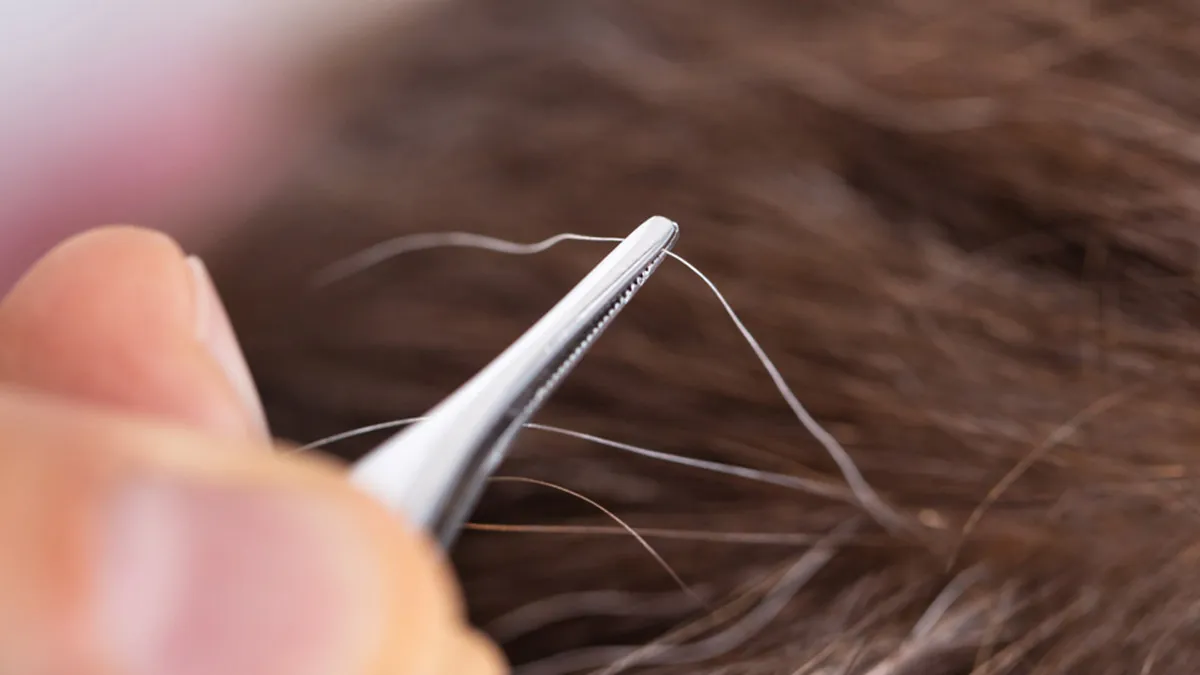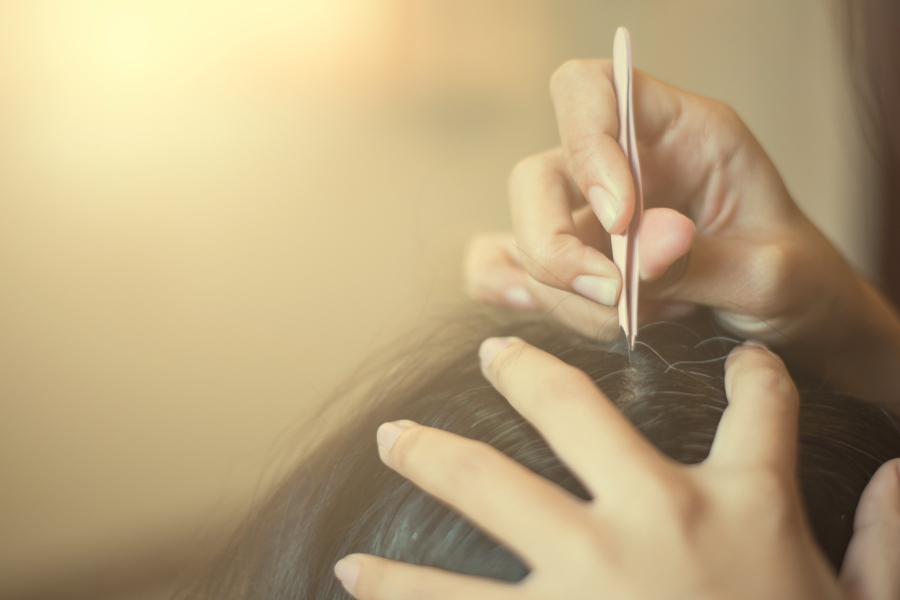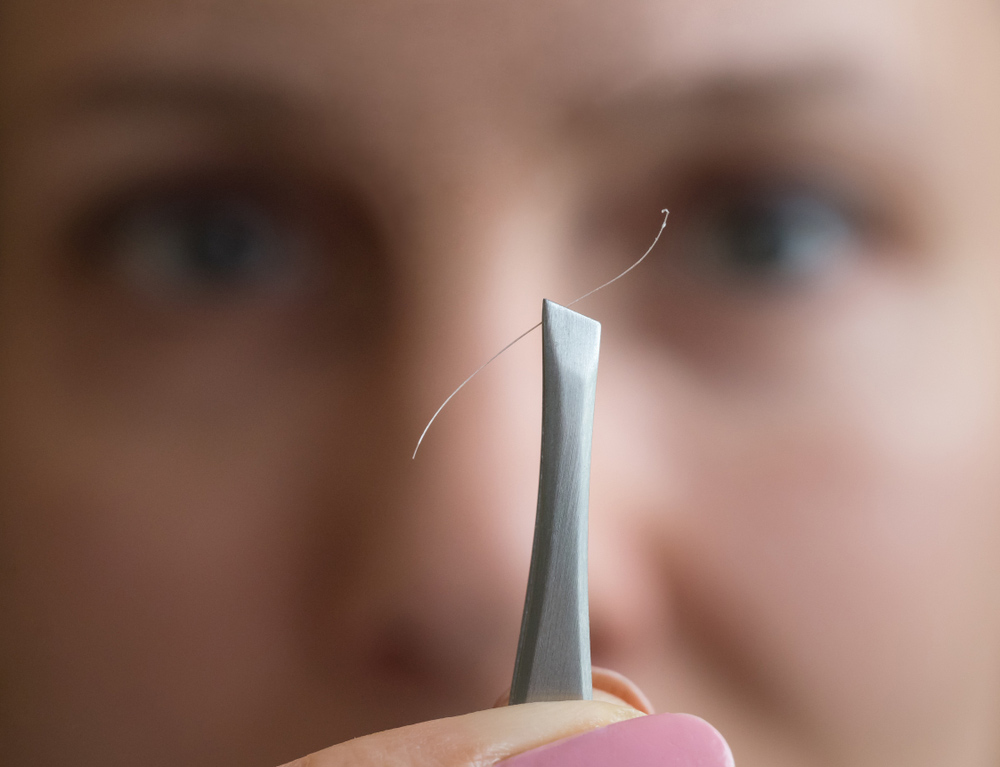
Have you ever plucked out a grey hair only to have your mum warn you, “Stop that, or you’ll end up with a head full of greys”? It’s one of those age-old beliefs passed down through generations, causing many to think that pulling out a single grey hair is like opening the floodgates for an avalanche of new ones. This common myth has left people avoiding mirrors and resisting the urge to tackle the odd grey strand. But is there any truth to this claim, or is it just another hair-related superstition? Let’s unravel the science behind it.
Table of Content:-
To debunk this myth, the OnlyMyHealth team spoke to Lalita Arya, VP of Product for Dermalogy Care,Delhi.
The Myth of Plucking Grey Hair
Many people think that pulling out one grey hair will cause others to follow suit, but Arya explains, “There is no scientific basis to suggest that plucking grey hair triggers the growth of more grey hairs.” Each hair follicle operates independently and is not influenced by the activity of its neighbours.
This means that when a single grey hair is removed, the surrounding follicles are not stimulated to produce grey hair. However, according to studies, repeated plucking can damage the follicle, potentially leading to hair loss in that area.
Why Hair Turns Grey

The colour of our hair depends on melanin, a pigment produced by hair follicles. As we age, our follicles gradually lose their ability to produce melanin, leading to grey or white hair. Arya explains, “Once a hair follicle loses its capacity to synthesise melanin, the hair it produces will remain grey forever.”
Genetics and age play the most significant roles in greying. Stress, while often cited, has a weaker scientific correlation with hair turning grey. “When and how one begins to go grey is still mainly determined by one’s genes,” Arya adds.
The Risks of Plucking Grey Hair

While plucking grey hairs won’t cause an increase in their numbers, it’s not a recommended practice. Arya warns, “Repetitive plucking can damage the follicle, leading to hair loss in that area.” Over time, this can result in a thinner or patchy scalp, which is far more challenging to manage than grey hair.
Also read: Easy DIY Mask To Cover the Grey Strands Of Hair
How to Address Grey Hair
For those concerned about greying, dermatologists recommend three main approaches:
- Acceptance: Embrace grey hair as a natural part of aging.
- Colouring or Camouflaging Products: Use safe hair dyes or gels to manage greys.
- Consult a Dermatologist: If greying is excessive or premature, it may indicate underlying issues like vitamin deficiencies or autoimmune conditions.
“A balanced diet rich in nutrients such as Vitamin B12 and folic acid is essential for maintaining healthy hair colour,” Arya advises. These nutrients support the production of melanin and overall hair health.
Managing Premature Greying

Although premature greying is largely genetic, Arya emphasises the importance of scalp and hair care. “It’s more of an aesthetic concern than a medical issue,” she says. For those troubled by early greys, consulting a dermatologist can help identify any underlying causes and provide targeted solutions.
Conclusion
Plucking grey hairs won’t cause more to grow, but it can harm your scalp if done repeatedly. Arya said, “No external action, including plucking or cutting hair, can reverse the natural greying process.” Instead of relying on myths, focus on maintaining a healthy scalp and hair through proper nutrition, treatments, and care.
Whether you choose to embrace your greys or explore ways to manage them, informed decisions are key. Arya concludes, “Understanding the causes of greying ensures effective management and promotes healthy, vibrant hair.”
Also watch this video
Read Next
What Does A Headache On The Left Side Of Your Head Indicate And When Should You See A Doctor?
How we keep this article up to date:
We work with experts and keep a close eye on the latest in health and wellness. Whenever there is a new research or helpful information, we update our articles with accurate and useful advice.
Current Version